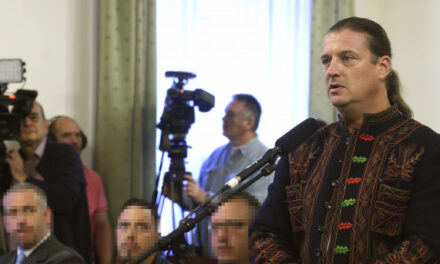Ferenc Krausz, Pierre Agostini and Anne L'Huillier will receive this year's Nobel Prize in Physics, according to the announcement made by the Royal Swedish Academy of Sciences in Stockholm on Tuesday.
According to the rationale, the scientists
they receive the recognition for their experimental methods of producing attosecond light pulses for the investigation of the movement of electrons within atoms.
The awardees will share 11 million Swedish crowns (a sum of HUF 368 million). The award is traditionally presented on December 10, the anniversary of the death of Alfred Nobel, who founded the award.
Ferenc Krausz, born in Móri (1962–), is a Hungarian physicist who obtained a diploma in electrical engineering at the University of Applied Sciences in 1985 and a physics degree at the Faculty of Science of the Eötvös Loránd University of Science. He began his research work at the Institute of Physics of the Budapest University of Technology and Economics under the guidance of József Bakos in the field of laser physics, Mta.hu reports about him.
He obtained his doctorate at the Vienna University of Technology in 1991, where he later worked as an associate professor and then as a professor. In 2003, he was appointed director of the Max Planck Institute for Quantum Optics in Garching, Germany, and since 2004 he has been the head of the Department of Experimental Physics at the Ludwig-Maximilians-Universität in Munich.
Already at the beginning of the 1990s, his interest became the focus of his interest in the examination of smaller and smaller sizes in space and time using ultra-short light pulses. This was made possible by the explosive development of femtosecond laser technology at the time, in the improvement of which Ferenc Krausz took a pioneering role in close cooperation with the laser physics researchers of the Institute of Solid State Physics and Optics of the MTA Wigner Physics Research Center (now the Wigner Physics Research Center).
As a result of the research, the world's first attosecond light pulses were produced and measured by Ferenc Krausz's group in the early 2000s.
With this, Ferenc Krausz was able to make real-time observations of the movement of electrons on an atomic scale for the first time. Since then, the technique he developed has been used in the investigation of the time dependence of many atomic and molecular physical processes, such as photoionization. The results of Ferenc Krausz's pioneering experimental work are used in several research institutes worldwide, including the ELI ALPS (Extreme Light Infrastructure Attosecond Light Pulse Source) research institute in Szeged.
After the recognition of Imre Kertész in 2002, the number of Hungarian Nobel laureates increased by two within two days, bringing the total to 17.
BREAKING NEWS
The Royal Swedish Academy of Sciences has decided to award the 2023 #NobelPrize in Physics to Pierre Agostini, Ferenc Krausz and Anne L'Huillier "for experimental methods that generate attosecond pulses of light for the study of electron dynamics in matter." pic.twitter.com/6sPjl1FFzv— The Nobel Prize (@NobelPrize) October 3, 2023
Source: MTI, MTA
Featured image: Hungarian physicist Ferenc Krausz (Photo: MTI/Attila Kovács)












